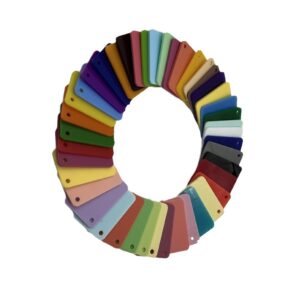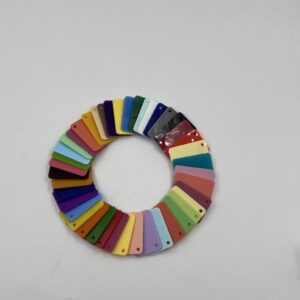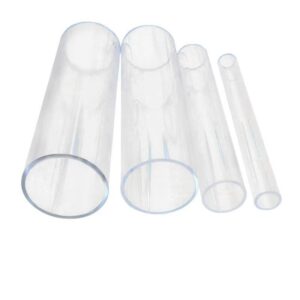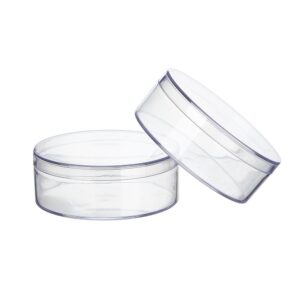Summary
Acrylic signage has emerged as a prominent and effective tool in retail environments, valued for its versatility, durability, and aesthetic appeal. These signs serve various purposes, from enhancing brand visibility to guiding customers within stores, making them essential in contemporary marketing strategies. The adaptability of acrylic signage allows businesses to customize signs to fit their branding needs, leading to increased customer engagement and enhanced shopping experiences.
Table of Contents
Its popularity among retailers is evident in its widespread use for both outdoor and indoor applications, including business signs, promotional displays, and point-of-sale signage.
The economic advantages of acrylic signage further contribute to its notability. Compared to traditional materials like wood or metal, acrylic signage can reduce costs by 30% to 50%, while also requiring less maintenance and offering long-lasting durability. This cost-effectiveness, combined with the ability to create vibrant and eye-catching designs, makes acrylic a preferred choice for retailers looking to optimize their marketing budgets without sacrificing quality or appearance.
However, the effective use of acrylic signage is not without challenges and controversies. Issues related to design principles, such as readability, color contrast, and strategic placement, are crucial for maximizing impact and ensuring that signage captures customer attention effectively. Furthermore, the integration of digital elements into acrylic signage raises questions about balancing traditional marketing strategies with innovative technology, as retailers strive to create immersive experiences that resonate with consumers.
Overall, acrylic signage stands out as a critical component of retail marketing, influencing consumer behavior and driving sales through its visually appealing and functional attributes. As retailers continue to innovate and adapt to changing market demands, the role of acrylic signage in enhancing brand visibility and customer engagement remains significant.

Types of Acrylic Signage
Acrylic signage has become a popular choice in retail environments due to its versatility, durability, and aesthetic appeal. Different types of acrylic signage serve various purposes, allowing businesses to effectively communicate their brand message and engage customers.
Outdoor Acrylic Signage
Business Signs
Acrylic is ideal for permanent outdoor business signs, providing a long-lasting professional appearance that can withstand various weather conditions. These signs enhance brand visibility and are particularly effective in high-traffic areas.
Temporary Outdoor Signs
For short-term promotions or events, temporary outdoor signs made from acrylic are effective in capturing attention without the need for long-term durability. These signs can be easily installed and removed, making them suitable for events or seasonal promotions.
Promotional Displays
Acrylic is often used in promotional displays that need to attract attention quickly. Its clarity and vibrancy enhance the visibility of messages, making it an excellent choice for engaging customers in outdoor settings.
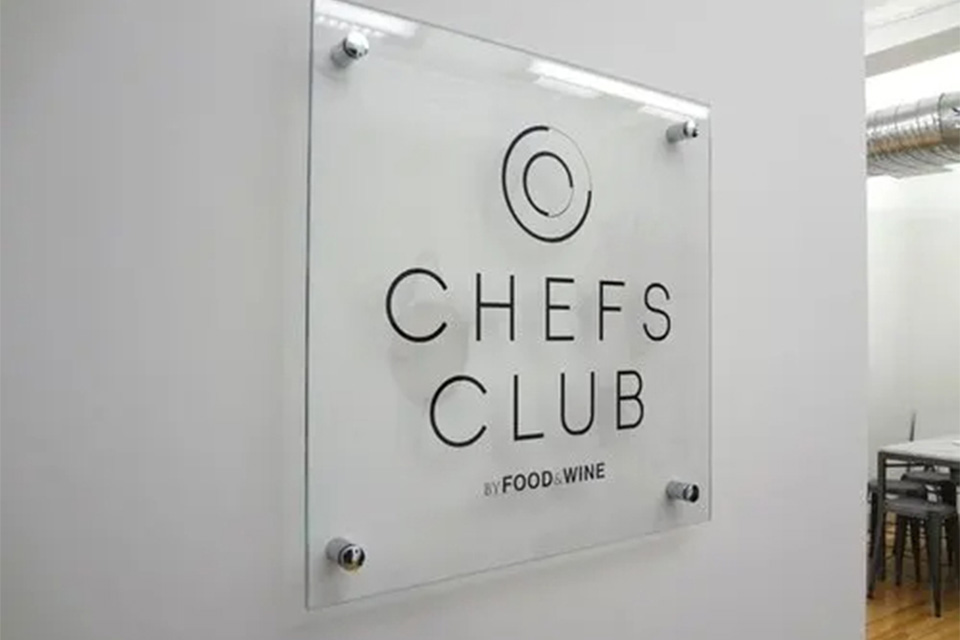
Indoor Acrylic Signage
Office Signs
In professional settings, acrylic signage is widely used for office signs, directional signs, and nameplates. The modern and polished look of acrylic enhances the overall aesthetic of corporate environments.
Lobby Signs
Acrylic lobby signs provide a sleek, high-end appearance that is ideal for corporate lobbies and reception areas. They help create a positive first impression for visitors and clients.
Retail Displays
Within retail environments, acrylic is popular for point-of-sale signs, product displays, and decorative elements. The lightweight nature of acrylic makes it easier to position signs effectively to catch the customer’s eye.
Wayfinder and Informational Signage
Acrylic signage can also be utilized for wayfinding and informational purposes. These signs provide relevant product and directional information, enhancing the customer shopping experience within the store.
Point of Sale (POS) Signage
Acrylic is frequently used for signs placed near checkout counters, helping to promote products and encourage last-minute impulse purchases. This strategic placement can significantly boost sales.
Creative Applications of Acrylic Signage
Frosted Acrylic Signs
Frosted acrylic signs offer a sophisticated look while providing privacy and branding opportunities. These signs can be used in offices and retail spaces for a contemporary feel.
Light Box Signs
Light box signs made from acrylic are effective for capturing attention, especially in dimly lit environments. The illumination enhances the visibility of messages, making them stand out even more.
Economic Benefits of Acrylic Signage
Acrylic signage is not only visually appealing but also cost-effective. It is durable, requiring less maintenance and lower installation costs compared to other materials, making it a preferred option for retailers looking to maximize their marketing budget. The ability to customize acrylic signs in shape, design, and finish allows businesses to tailor their signage to their specific branding needs while maintaining a professional appearance.

Design Considerations
Importance of Readability
When designing retail signage, clarity is paramount. Customers’ initial attention is drawn to the message rather than the products being sold; therefore, using clear fonts is essential. If the text is difficult to read quickly, potential customers may lose interest and leave the store. Small, elaborate scripts are particularly challenging and should be avoided to ensure that the message is easily digestible at a glance.
Color Contrast and Visibility
Emphasizing color contrasts can significantly enhance the visibility of retail signage. Using primary colors and their various hues creates high contrast, making text and visuals stand out more effectively. For long-distance visibility, a well-contrasted design is essential, as it allows the signage to capture attention from afar and communicate the intended message efficiently.
Strategic Placement
The placement of signage plays a critical role in its effectiveness. Displays should be positioned at eye level and within the line of sight of customers to ensure maximum visibility. Additionally, signs should be placed in areas with high foot or car traffic to capture the attention of potential customers as they approach. The entrance zone is particularly important, as it sets the tone for the shopping experience and can effectively highlight promotions without permanently altering the store’s design.
Keeping Messages Concise
Retail signage should deliver concise and clear communications. Excessive fluff can detract from the core message, so it’s important to streamline the information. Using a few impactful words or symbols can communicate essential messages effectively without overwhelming customers with lengthy text.
Allure and Curiosity
Designs should be crafted to provoke curiosity and invite customers into the store. This can be achieved through a variety of approaches, including humorous storefront signs, elegant retail displays, or unique custom shapes and colors. An alluring design sets a business apart from competitors and draws customers in to explore what lies inside.
Incorporating Digital Elements
The integration of digital signage can enhance customer engagement significantly. Dynamic content, such as video clips or animations, captures attention more effectively than static displays. This approach not only highlights products and promotions but also creates an immersive experience that encourages customers to spend more time in the store, potentially increasing sales.
By considering these design elements—readability, color contrast, strategic placement, simplicity, allure, and the incorporation of digital components—retailers can create effective signage that enhances the overall shopping experience and drives customer engagement.

Best Practices for Retail Acrylic Signage
Importance of Readability and Contrast
One of the foremost considerations when designing acrylic signage for retail is ensuring readability. Clear fonts are essential; if customers cannot quickly understand the message, they may lose interest and leave the store. Using strong color contrasts helps text and visuals stand out, making signage more noticeable. Retailers should consider utilizing primary colors and their varying hues to create designs that attract attention from a distance, which is crucial for effective communication in a retail environment.
Strategic Placement
Optimizing the placement of acrylic signs can significantly enhance their effectiveness. Retailers must be mindful of customer behavior and ensure that signage is positioned where it will garner the most visibility. Backlit acrylic signs are particularly effective, as their illuminated nature makes them visible from a distance, even in dimly lit areas. This not only increases foot traffic but also encourages customer engagement with the displayed message.
Utilizing Light and Emotional Connection
Incorporating innovative lighting solutions can create dynamic atmospheres that resonate with customers. Well-lit signs can evoke specific emotions, enhancing the overall shopping experience. Retailers should align the lighting of their signage with their brand identity to foster a stronger emotional connection with their audience, potentially leading to increased customer loyalty and impulse purchases.
Enhanced Product Visibility
Acrylic displays are known for their high transparency, which allows light to pass through and illuminate products, making them appear more appealing. This increased visibility can entice customers and encourage them to examine products more closely, ultimately improving sales potential. Retailers can take advantage of acrylic’s versatility by shaping it into various display formats, such as shelves and cases, which can enhance store presentation and improve product organization.
Cost-Effectiveness and Durability
Acrylic signage offers long-term economic benefits for retailers. Compared to metal or wood, businesses can save significantly—between 30% to 50%—when opting for acrylic materials. The durability of acrylic means it is weather-resistant, impact-resistant, and maintains its clarity over time, reducing the need for frequent replacements and ongoing maintenance costs. This combination of affordability and longevity makes acrylic an appealing choice for retailers looking to optimize their signage strategy.
Case Studies
Successful Implementations of Acrylic Signage
Acrylic signage has proven to be an effective medium for various retail brands, enhancing customer engagement and facilitating information dissemination. Several notable case studies illustrate how brands leverage acrylic signage to boost their retail environments.
Royal Greenland
Royal Greenland, a prominent seafood provider, partnered with eyefactive to create an interactive signage solution that enhances customer interaction with their products. This approach aims to educate customers about the brand’s sustainable practices, thereby fostering deeper connections and encouraging purchases. The implementation of engaging acrylic displays helped in visually communicating the brand’s message effectively, contributing to increased customer awareness and sales growth.
s.Oliver
German fashion brand s.Oliver has embraced digital signage technologies to innovate its brick-and-mortar retail spaces. By integrating acrylic signage into their stores, they have enhanced the shopping experience, making it more interactive and engaging for customers. This strategic move aligns with the brand’s vision to remain modern and consumer-focused, appealing particularly to a demographic that appreciates visually appealing environments.
ADAC
The Allgemeiner Deutscher Automobil-Club (ADAC) collaborated with eyefactive to redefine its service offerings through the implementation of cutting-edge multi-touch technology in their shops. The project’s trial phase at the ADAC Lab included acrylic signage that provides a visually striking overview of the club’s services. This initiative aimed to enhance customer engagement and create a more informative retail experience, showcasing how acrylic can serve as both a functional and aesthetic component in modern retail settings.
Tesla
Tesla has utilized digital signage, including acrylic displays, to gather insightful data on customer interactions and preferences. This approach enables the brand to tailor its marketing strategies more effectively based on real-time customer feedback and engagement metrics. The ability of acrylic signage to convey key promotional messages dynamically has significantly contributed to Tesla’s marketing efforts within their retail environment. These case studies highlight the versatility and effectiveness of acrylic signage in enhancing retail experiences, driving customer engagement, and supporting brand objectives. As brands continue to innovate their retail spaces, acrylic signage remains a crucial element in creating compelling and visually appealing environments that resonate with consumers.
Benefits of Using Acrylic Signage in Retail
Acrylic signage offers numerous advantages for retail businesses, making it a popular choice for enhancing brand visibility and customer engagement.
Customizability
One of the primary benefits of acrylic signs is their customizability. They can be tailored in shape, design, and finish to meet specific branding requirements, allowing businesses to effectively convey their unique identity to customers. This flexibility makes acrylic an ideal material for various applications, including retail advertising and menu boards, which can attract and inform customers efficiently.
Durability and Weather Resistance
Acrylic is renowned for its durability and weather resistance, making it suitable for both indoor and outdoor use. This resilience ensures that the signage can withstand various environmental conditions without compromising its quality or appearance. Retailers can confidently utilize acrylic signs in diverse settings, knowing they will maintain their vibrancy over time.
Enhanced Visibility and Aesthetic Appeal
The clarity and vibrancy of acrylic enhance the visibility and aesthetic appeal of retail signage. Techniques such as UV printing and etching allow for the creation of detailed and vibrant designs that capture attention and improve the overall customer experience. This visual impact is crucial, as studies indicate that approximately 50% of consumers view signage as a significant factor in their decision to enter a business.
Economic Benefits
From an economic perspective, acrylic signage can lead to substantial cost savings. Compared to traditional materials like metal or wood, businesses can save between 30% to 50% by opting for acrylic, which also tends to require less maintenance over time. Additionally, advancements in printing technology facilitate efficient production processes, reducing waste and turnaround times, allowing retailers to frequently update their signage without incurring excessive costs.
Flexibility in Marketing
Acrylic signs can easily support various marketing strategies, including promotional messages and seasonal changes. Retailers can adapt their signage quickly to reflect current promotions or events, making acrylic an agile tool in fast-paced retail environments. This adaptability enhances the effectiveness of marketing efforts, as retailers can respond promptly to market trends and customer demands.
Innovative Design Opportunities
Finally, the use of acrylic signage opens up innovative design possibilities that enhance customer engagement. Thoughtfully chosen colors and creative lighting solutions can transform standard signage into immersive experiences that resonate with customers. By leveraging these design elements, retailers can create memorable impressions that encourage repeat visits and brand loyalty.
Impact on Consumer Behavior
Acrylic signage plays a crucial role in shaping consumer behavior in retail environments. The design and implementation of these signs can significantly influence customer decisions, perceptions, and overall shopping experiences.
Psychological Principles
Color Psychology
Color is one of the most powerful elements in signage that can evoke specific emotions and behaviors. For instance, red often creates a sense of urgency, making it suitable for clearance sales, while blue conveys trust and reliability, ideal for informational signs. By understanding these color associations, retailers can create effective signage that resonates with their audience and encourages purchasing decisions. Bright colors like yellow and orange can attract attention, while cooler colors may create a calming atmosphere, affecting how customers perceive the brand.
Visual Hierarchy and Attention
The way signage is structured also affects consumer behavior. A well-designed visual hierarchy can guide customers towards key messages and promotions. Utilizing bold fonts and strategic placements can draw attention to important information, making it easier for customers to make quick decisions. For example, a study found that 76% of employees would enter a store based solely on its signage, highlighting its potential impact on foot traffic and consumer choices.
Emotional Influence
Signage not only conveys information but also shapes the emotional responses customers have towards a brand. Well-crafted acrylic signage can instill excitement, curiosity, or nostalgia, thereby enhancing customer engagement.. By aligning signage with the brand’s identity and values, retailers can foster positive emotions that encourage repeat visits and loyalty.
Navigation and Wayfinding
Informational signage serves a functional purpose by guiding customers through retail spaces. Effective wayfinding systems, which may include directional, organizational, or departmental signs, enable customers to navigate stores more easily. When customers can effortlessly find what they need, they are more likely to have a positive shopping experience and return in the future.
Digital Displays and Flexibility
Incorporating digital displays into acrylic signage strategies offers flexibility that can greatly enhance consumer interaction. Retailers can instantly update content to reflect current promotions or inventory changes, allowing for a dynamic shopping experience. This adaptability enables businesses to respond quickly to consumer trends, ensuring that their messaging remains relevant and impactful.
Point-of-Sale Influence
Strategically placed acrylic signage at point-of-sale areas can promote impulse buys by highlighting special offers and complementary products. These displays are designed to trigger last-minute purchasing decisions, effectively increasing the average transaction value and enhancing sales figures.





